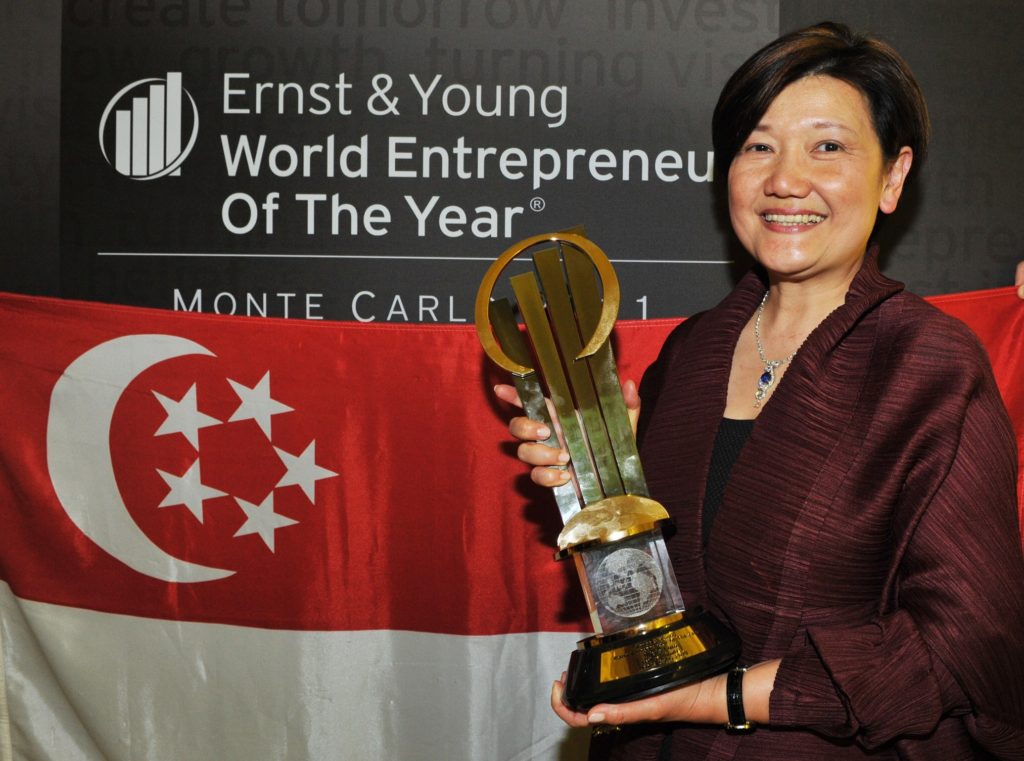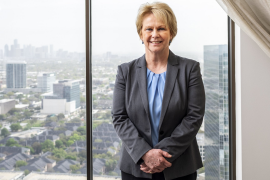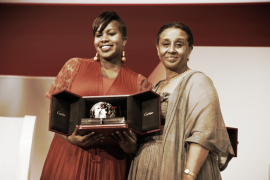By: Tom Freyberg
Five years in the making, WWi was recently granted an exclusive interview with Olivia Lum, CEO of Singapore water firm Hyflux. Here she talks to Tom Freyberg about the Qurayyat deal in Oman, progress in India and what it takes to grow a multi-million dollar global water business.
A graduate from the National University of Singapore in 1986 with an honours degree in chemistry, Lum built her water firm Hyflux to generate revenues of over S$650 million in 2012.
Singapore entrepreneur Olivia Lum’s success story can be likened to her home nation. As an independent country back in 1965, Singapore lacked resources. Under the guidance of the country’s first Prime Minister — the recently deceased Lee Kuan Yew — the nation fostered multinationals and educated its workforce, mandating that English was taught in schools. Today it’s a thriving, self-sustaining economic hub in Asia.
The entrepreneurial spark and the well-documented rise of Hyflux’s CEO is a similarly impressive tale. Adopted at birth, Lum didn’t have it easy. “I went through a very poor childhood,” she tells me, referring to a time when she grew up in difficult conditions.
Yet it was this period that could be attributed to the entrepreneurial spark that marks the difference between the good and great CEOs. “Earning your own pocket money was something that you really had to do — otherwise you had no money,” she says. “So, as a child, how do you earn money? You sell papaya or fruit along the street. Maybe that was my training as an entrepreneur.
“It trains you how to approach customers. It trains you how to have a certain discipline that if you don’t sell, you probably won’t have money to get through the day.”
From selling papaya many years ago, her company generated group revenue of S$321.4 million for the year ending December 31, 2014. Profit was S$57.5 million. The journey from survival to becoming one of Asia’s top businesswomen running a multi-million dollar business, however, was not all smooth sailing.
After graduating from the National University of Singapore in 1986 with an honours degree in Chemistry, Lum was picked up by Glaxo Pharmaceuticals as a chemist, where she was tasked with looking after wastewater treatment.
Two and a half years later “having no contact and not knowing the outside world”, as she describes it, Lum moved forward with her dream to start her own business. Armed with only S$20,000 in 1989, she offered her services as an agent for large water companies.
She describes it as a “hard sell” knocking on people’s doors and although wanting to give up in the first and second year, she never did. Despite selling other companies’ products into Malaysia and Indonesia, Lum wanted to create and sell her own technology.
“During that time nobody had heard of membranes and I told myself that I needed to get into the membrane business because membranes are the most energy-efficient operation compared to many operations, like distillation and evaporation and so on,” she says. “I saw it as the most effective way to clean up water.”
After getting support from her lecturers at the National University of Singapore, she built a small membrane-based pilot project in 1992. It was this foresight with a then unproven technology that could be attributed to much of Hyflux’s success today.
“That’s how I started water recycling in Singapore. People did not want to build a large scale plant because it [membranes] was still not tested,” she says.
After nearly bankrupting the company by venturing into China, now offering built systems such as water filters and softeners, Lum survived the Asian financial crisis in 1997 while many of her competitors, involved in Thailand, Indonesian and Korean markets, took a big hit.
It was then in 1998 that the Singaporean government starting promoting water recycling. The companies “remembered us”, Lum says, from her earlier work doing pilot plants and demonstrations, which she says “got us in”. Lum then helped implement water recycling in Singapore for various industries.
In 2001, the CEO raised between S$6-$7 million from listing Hyflux as a public company despite, what could be called bad timing. “It was another financial crisis,” she says. “It was the dotcom bubble burst. So nobody wanted to subscribe to my shares. We had to sell it very cheaply to the market.”
Four years later and in 2005 Hyflux was put on the map. It built and opened Singapore’s first major desalination plant — the 136,380 m3/day SingSpring project. “At the time I can claim I built the largest desalination plant globally,” Lum says proudly.
“SingSpring was a real breakthrough for us,” she adds. “It was a huge risk but because we had been handling membrane systems for a long-time from 1992, we had nearly nine years’ experience. Membranes are very scalable technology. It’s like a fridge: you can build one fridge, you can build 10 fridges to 1000 fridges — you just put them together. This project was the breakthrough for us — we accepted the challenge and built the first one.”
For SingSpring, she insisted that a membrane plant of this scale would work, despite the doubters and critics. The result was the largest membrane-based desalination plant in Asia at the time.
This was the same for Hyflux’s winning bid for the Magtaa desalination plant in Algeria, North Africa. Lum insisted that a 500,000m3/day plant using membranes would work for the region. The result was the largest membrane-based desalination plant in Africa.
Despite delays, including a warehouse fire, Magtaa was inaugurated in November 2014. Water will be supplied to Oran, Algeria’s second-largest city and neighbouring provinces under a 25-year water purchase agreement with L’Algerienne Des Eaux and Sonatrach.
In March Hyflux signed a water purchase agreement for its 200,000 m3/day independent water project (IWP) in Qurayyat, Oman. Construction of the US$250 million plants is expected “soon” with the project scheduled to start operation in May 2017. Water will be supplied to the Oman Power and Water Procurement Company (OPWP) under a design, build, own and operate model (DBOO).
The CEO believes that future desalination projects will be delivered across MENA as both mega plants — at the scale of Magtaa — particularly in industrial areas where water is needed but also smaller desalination plants, ranging from 10,000 m3/day — 50,000 m3/day for coastline communities.
Concluding the interview, I decided to find out what has driven Lum to grow the business she has. What marks her different to other CEOs and why she, as a female in a male engineering dominated industry, has succeeded where others have failed.
“Perseverance,” she says astutely. “A lot of entrepreneurs may have a great idea, good products and good suggestions but they give up easily. They don’t persevere enough. As an entrepreneur — perseverance is a must-have attitude. Water is a sunrise business. Don’t easily give up. Water is becoming more and more scarce. Population and industrial growth mean there is more polluted water. These are critical elements that will propel water to the next level.”
Hyflux’s CEO finishes by saying: “There may be people who are not keen on the water industry or business but I think someone has to do something about it and that’s what we’re doing.”
It’s this humble attitude that has earned Lum the respect she deserves in the global water market. When retelling her story, she repeats the phrase “I told myself”, when referring to making a decision on her next move: whether it’s quitting Glaxo, launching her own water technology or bidding against the odds for SingSpring in Singapore or Magtaa in Algeria.
The CEO clearly has inner entrepreneurial voice guiding her, as well as a dogged determination that has driven her to scale up the business and keep growing.
Lum is an inspiration to every water professional out there wanting to grow a business and human being — no matter how tough your start in life — on sticking with your dream until it becomes a reality.
Source: waterworld.com




